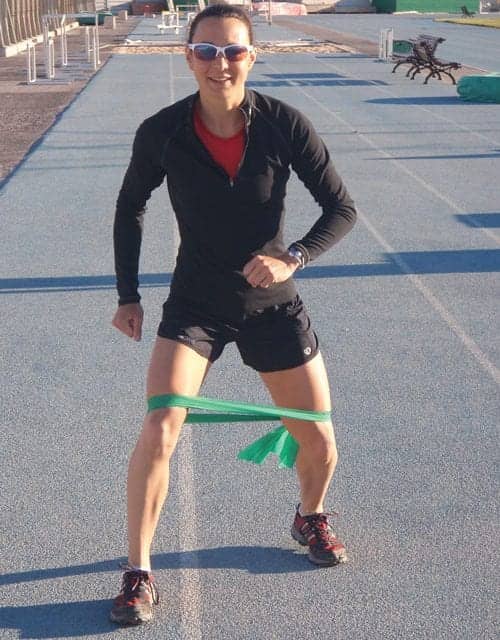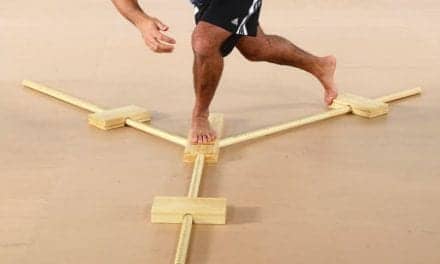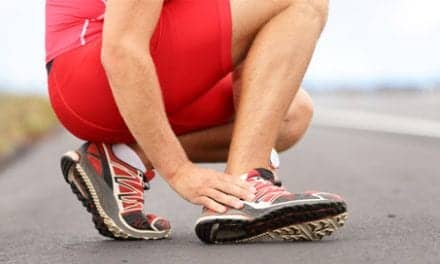Smartphones and home-based therapy products help patients stay on track with exercise programs outside of the PT clinic.
Rehabilitation can sometimes be a long and challenging process, so keeping a patient motivated to train and adhere to an exercise program is key to their success. Many factors can affect motivation, including the individual, that person’s goals, and the level of pain and/or dysfunction being experienced. At our clinic, patients are typically seen once to three times a week depending on pain, condition/injury, and severity. We prescribe a home exercise program and recommend that exercises be performed daily. We spend the first visit/evaluation thoroughly reviewing proper form and execution of exercises, and make sure patients can perform them correctly and safely.
On follow-up visits we review the exercises, if necessary, and progress the program when appropriate. We also print a list with pictures of exercises and email it to patients so they have access to them at home.
Occasionally, a patient’s phone is used to video them performing the exercises in clinic so they have an instantly accessible demonstration. We are very precise about proper form with all the exercises to maximize effectiveness, improve prognosis, and reduce risk for injury while performing these movements.
Accountability is typically the greatest factor affecting compliance to a home exercise program. Patients know that we will ask them at every visit if they are being consistent with their exercise program—and it is immediately obvious when they are not complying. Outcomes are exponentially better with those who consistently perform their exercises as prescribed.
Equipment can play an important part in helping keep a patient motivated to train. Items we typically incorporate into a home exercise program include resistance bands, foam rollers, stretching straps, and Swiss balls. If necessary, we also include TENS units, topical analgesics such as BioFreeze from the Hygienic Corporation, based in Akron, Ohio, and tape. If a patient has other equipment at home or access to it at a gym, we will also instruct proper use and suitable exercises. This may include, for example, exercises with therapy balls, free weights, kettle bells, and cardio equipment.
We encourage patients to buy some simple products from us to facilitate immediate adoption of the exercise plan. Additionally, if there is a monetary investment in the program—that is, the patients purchase their own equipment—then there is usually an increased likelihood for adherence. We sell resistance bands of varying levels, foam rollers, stretch straps, and TENS units, and will facilitate purchase of any other equipment we may not have in stock.
Resistance Bands:
These are highly versatile and most commonly used for shoulder, knee, and ankle exercises. We often see swimmers with rotator cuff issues, and these bands can be used for shoulder internal and external rotation exercises as well as scapular exercises. They can also be looped around the knees and/or ankles for a variety of gluteal exercises that are often part of lower-quadrant rehabilitation programs. Manufacturers of these useful tools include the Hygienic Corporation, which offers the Thera-Band line of resistance tubing and bands, and Warminster, Pa-based Stretchwell Inc, which manufactures the Fit-Lastic line of progressive resistance products.
Swiss Ball:
Perhaps the most widely utilized product across all home exercise programs, the Swiss ball is used in most core stability movements. Available from Minneapolis-headquartered OPTP, and Libertyville, Ill-based SPRI Products Inc, these balls can help enhance strength, increase muscle isolation, and improve balance.
Foam Rollers:
These are a hugely popular product that is great for targeting specific muscles for self-myofascial release. Used daily, foam rollers can help patients to help themselves. Brands such as Trigger Point Performance, Thera-Band, and LuxFit are among the most widely seen, with Trigger Point Performance’s The Grid roller (13 inches long and 5 inches in diameter) a must-have choice for many of our elite athletes who travel for training and racing. SPRI Products and OPTP also both offer a wide variety of foam rollers.
Topical Analgesics:
Although research debates the actual merits of using topical analgesics, many patients report feeling less pain and soreness as a result of applying products such as BioFreeze. We use this product in clinic, and patients often use it themselves at home. Another versatile topical analgesic is Natural Pain Relieving Gel for warm therapy or cool therapy offered by Albuquerque, NM-based Sombra. This gel is formulated to be alcohol-free, nongreasy, and used to relieve pain associated with arthritis, backaches, strains, and sprains.
Conclusion
If we had an electronic system whereby patients were able to log when they performed their home exercise program, I believe we would see far greater compliance and, ultimately, improved results. However, we are fortunate to have a patient population at Evolution Physical Therapy that is highly athletic and active, so it is less of an issue. At clinics where this is not the case, and compliance is an ongoing concern, developing a system for patients to register each time they complete their exercises could be one way to see improved results. Encouraging patients to purchase some of the inexpensive but highly valuable items of equipment outlined in this article could also be a step in the right direction and a means of expediting rehabilitation and recovery. PTP
Darwin Fogt, MPT, is owner of Evolution Physical Therapy and Evolution Fitness in Los Angeles, and a California and New York Licensed physical therapist with a BS in Exercise Physiology from USC and a Masters degree in Physical Therapy from California State University, Long Beach. Fogt has spent most of his professional career in orthopedic and sports medicine rehabilitation. For more information, contact [email protected].





